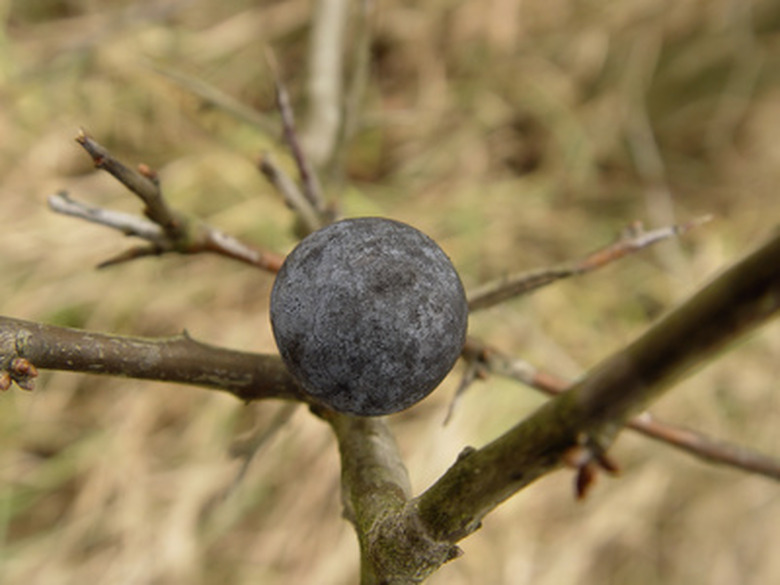Blueberry Bush Adaptations
Blueberries can grow in a wide range of soils, temperatures and other conditions. They have evolved in their habitat to promote certain characteristics that benefit the plant. Environmental changes and natural disturbances are adapted to and the adaptations are passed to the next generation. Blueberries further their tolerance to imperfect conditions by hybridizing with other species and combining the adaptive traits. Wild blueberries are better at the adaptation game since pure domestic blueberries cannot interbreed and enhance the stock.
Cold Tolerance
An adaptation is when a plant or animal evolves a survival trait. Blueberries have developed a tolerance to cold temperatures. They will lose their leaves, but the woody stems retain life until the warm season comes. The bushes actually need a long period of cold to produce a big fruit yield. Freezing weather brings with it a lack of water and blueberry adaptations are beneficial in combating cold. These include thick leaves, narrow vessels, small stomata and the ability to store salt in the leaves.
- Blueberries can grow in a wide range of soils, temperatures and other conditions.
- Freezing weather brings with it a lack of water and blueberry adaptations are beneficial in combating cold.
Rhizomes and seeds
Wild lowbush blueberries spread through rhizomes. Out of rhizomes, sprouts and shoots grow that become blueberry clones. They have the same genetic makeup as the parent plant. This adaptation helps the plant propagate in areas where seed would not find a hospitable environment and would have trouble germinating. The simplicity of the rhizome plants is that they can bypass the environmental difficulties of seed life and germination. Highbush blueberries primarily reproduce by seed. They grow in moister humus-rich areas where seed might take root. Also, they rely on birds to carry the seed and plant it in new areas to increase the population.
- Wild lowbush blueberries spread through rhizomes.
- They grow in moister humus-rich areas where seed might take root.
Heliophyte
Heliophytes are plants with an adaptation to fire. In some regions fire is part of the growth cycle and plants exposed to its charring effects need to be able to survive. Blueberries are heliophytic and have resistance to the heat and dryness caused by a fire but also can survive if foliage is affected by quickly producing more. After being exposed to fire the plants produce suckers and sprout quickly. Heliophytes are generally woody herbaceous plants.
Leaves
Coreaceous leaves are an adaptation to very sunny, hot and dry areas. The thick, leathery leaves retain water in the leaf, which is important in droughts. The leaves also sport hairs on the underside to reduce water loss from the stoma. The stoma are essentially the respiration ports on leaves and can bring in water or release moisture.
- Heliophytes are plants with an adaptation to fire.
- The stoma are essentially the respiration ports on leaves and can bring in water or release moisture.
Soil pH
Blueberries are generally found in acidic soil. Highly acidic soil has a low pH and is found across the Pacific Northwest and British Columbia, as well as other select areas. Blueberries, adapted to low-pH soil, are also tolerant of other growing conditions.
